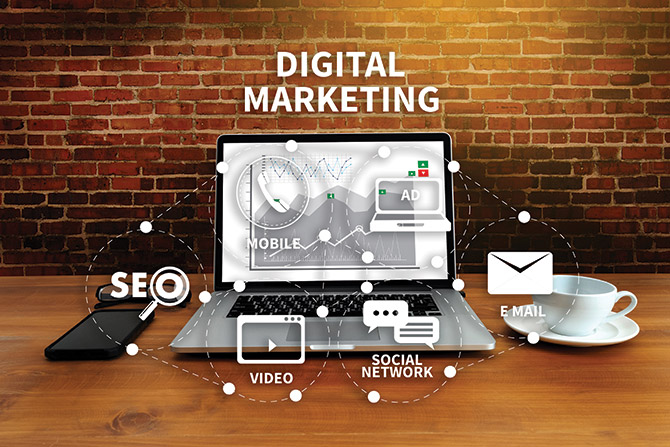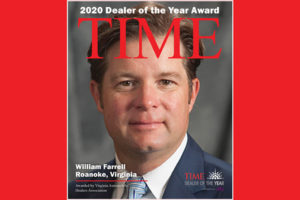By Virginia Automobile Dealers Association
Selling cars is a great business to be in, but the rules have changed in some ways as a result of the internet and social media websites. Today, customers do look on websites, but they often start the car search on social media. Reaching potential customers and connecting with them through social media is only going to work if you choose the right social media websites and use them to build a compelling brand.
Building a compelling brand has essential components: the brand needs to be likable, convenient and available. Also, you need to prepare potential customers for the day when they are ready to buy so that when they decide to buy a car, your brand is the one they want.
Being likable involves being personal and social. Many dealerships do good within their communities by supporting local charities and schools. Social media platforms are ideally suited to letting people know about these efforts. Pick things that matter to you, because whatever matters to you is going to matter to other people, as well; being personal is a great way to connect with someone else. Animal lovers may divide into groups (the ones who love dogs, the ones who love cats, and the ones who love anything alive), but whichever category you happen to fall in personally, other people will be able to tell that your interest is genuine. Genuine interest creates a bridge between you and other people.
Being convenient involves knowing your customers and potential customers well enough to know which social media platforms they use so you know which ones are most likely to help you maintain a connection with people. Social media platform usage shifts all the time. Do your homework and plan accordingly.
Once you decide where you want to put your time and energy, write another plan for reminding people about your brand. The idea is to hit the balance between too much contact and too little. Nobody wants a constant barrage of texts and emails, but you also don’t want to limit yourself to contacting people once a year. Again, you are going to have to do some homework. When do your customers and potential customers want to hear from you?

The best people to ask are the ones who are in your target market. If you want people to respond to questions, keep it brief and easy, and think about ways to reward participation. Many people do not want to answer surveys if it takes much time or effort, especially if they are busy and want to move on to something more important to them than your brand. Offer something people want, however, and they might be willing to go to a little extra effort.
Think about using cross-promotion to build your brand.
Cross-promotion builds on the idea that customers and potential customers interact with brands at more than one level and at multiple times. These interactions create useful customer touchpoints. Look at any products you offer that are related to other products, and see what you can do. For example, suppose you are trying to get back survey responses, and your dealership happens to rent cars to customers. Credit toward a car rental when you know someone has rented cars from you before might be valuable to them.
If you have an existing customer, you could offer money toward parts, accessories or service. Perhaps you are doing emissions testing or an oil change for a customer; that’s an opportunity for building the relationship and rewarding them for giving you their business, even if that business is much less valuable than buying a car. Put information about cross-promotions online so people will know about them.
Cross-promotion isn’t limited to your product line. Look at the business around your business. Almost all businesses have websites and a social media presence. You might be able to promote business interests for each other in a mutually beneficial way. You could offer a car wash to their customers; they could offer a sandwich to yours.
Preparing potential customers so they will be more likely to make a big purchase from you later involves show and tell.
Show and tell is a basic form of storytelling that we tend to associate with young children. It can be as simple as grabbing a favorite object and telling other people about it. Show and tell works with selling automobiles because there’s no better way to convince a potential customer that they want the car you want to sell them than by letting them see just how great a car it is. The best way of all to show them that is with a test drive, of course, but new owners may not test drive their new car until very late in the process. Increasingly, they might not drive it at all until after they’ve bought it.
For dealerships, an online version of show and tell means you need to show customers pictures and videos of the car, and make it easy to design their dream version. New cars generally put this tool to work already, but as the used-car market continues to become more important, you could expand it to used cars as well. Many listings for used cars either have just one low-quality picture, or they don’t have a picture at all. The description is usually basic and is limited to the must-have technical details. The disparity between online information for new cars and used cars is striking.
From a practical perspective, of course, it can seem like the most cost-effective approach to selling used cars is the one that doesn’t require investing much time or effort into presenting them. That might not be the right approach in the future. At a time when the automotive industry is moving toward autonomous cars and hybrid or electric cars, the market is starting to see interesting developments:
- Many people cannot afford the current high prices for hybrid and electric cars. Do they want them? Yes. The technology is attractive. But sensible people don’t buy what they can’t afford.
- Manufacturers are continuing their push to bring new choices to the marketplace. Many customers are waiting for that, along with a drop in prices as those new choices become more widely available. It’s a slow process because of the associated expenses involved, but someday the transition will be over. Expect a surge in used cars when people can finally get the cars they really want.
- Car ownership trends are changing. The dealership customer base may end up being very different from now if people generally embrace the opportunity to move around conveniently even if they own no cars or fewer cars than they did before.
As a result of all these developments, the U.S. may soon see a huge increase in the number of used cars that are for sale, and used-car presentation online may become more important than it has been in the past. That means your social media efforts will need to include used cars as well as new ones.
This story appears in the 2019 Issue 4 of the Virginia Auto Dealer Magazine.









